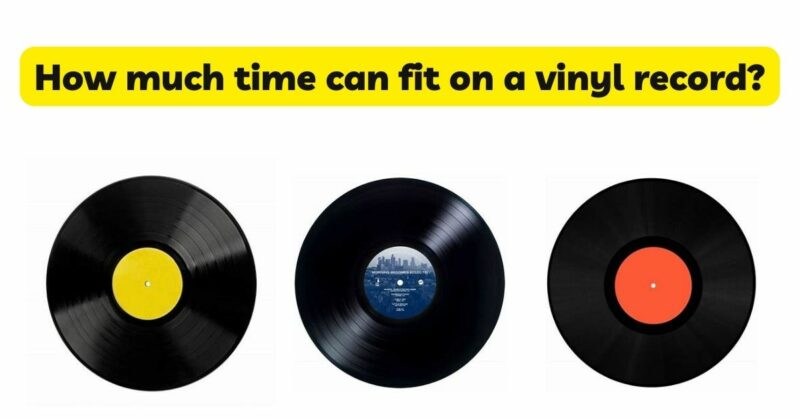Vinyl records have long been cherished for their unique sound and nostalgic appeal. As a vinyl enthusiast, understanding the limitations of playtime on a record is essential for selecting appropriate content and optimizing the listening experience. In this article, we will delve into the factors that determine how much time can fit on a vinyl record, considerations for record length, and the impact of different formats on playtime. By understanding these aspects, you can make informed choices when building your vinyl collection and ensure optimal playback quality.
- Record Size and Formats:
Vinyl records come in various sizes and formats, each with its own limitations and playtime considerations. The most common formats include:
a. 12-Inch LP (Long Play): This format is the standard for full-length albums. It typically offers the longest playtime, accommodating approximately 20 to 30 minutes per side. However, it’s important to note that the available playtime can vary based on factors such as groove spacing and the desired sound quality.
b. 10-Inch LP: Smaller in size, 10-inch LPs offer a slightly reduced playtime compared to 12-inch records. They generally provide approximately 10 to 15 minutes per side, making them suitable for EPs or shorter releases.
c. 7-Inch EP or Single: Commonly known as “45s,” 7-inch records are often used for singles or shorter releases. They typically provide around 3 to 5 minutes per side, allowing for a single song or a couple of shorter tracks.
- Groove Spacing and Sound Quality:
The length of playtime on a vinyl record is closely tied to the spacing between grooves and the desired sound quality. To ensure optimal audio fidelity, grooves on a record need to be adequately spaced to avoid overlapping or excessive compression of sound information. This spacing is determined by the mastering engineer and can vary based on the desired loudness, dynamic range, and overall quality of the recording.
- Record Cutting Techniques:
The techniques used during the cutting process also influence the available playtime on a vinyl record. The cutting engineer must balance the desire for longer playtime with the physical limitations of the record size and the need to maintain audio quality. Modifying the cutting parameters, such as adjusting the depth and spacing of grooves, can affect the overall playtime.
- Record Speed:
The speed at which a record is played also impacts the available playtime. The standard speed for vinyl records is 33 1/3 revolutions per minute (RPM) for 12-inch LPs and 45 RPM for 7-inch records. Playing a record at a slower speed (e.g., 16 RPM) can significantly extend the playtime, but this is not a common practice for commercial releases and may affect the sound quality.
- Double and Triple LP Releases:
For longer albums or concept records, artists may release double or even triple LP sets to accommodate the additional content. These sets provide extended playtime by spreading the tracks across multiple discs. Such releases often allow for a more immersive listening experience without sacrificing audio quality or overcrowding the grooves.
- Playtime vs. Audio Quality:
While longer playtime may seem desirable, it’s important to strike a balance between playtime and audio quality. Overstuffing grooves with excessive content can result in a loss of fidelity, increased surface noise, or reduced dynamic range. Mastering engineers and record producers carefully consider these factors to ensure an optimal listening experience without compromising the sonic integrity of the music.
Conclusion:
The available playtime on a vinyl record depends on factors such as record size, format, groove spacing, cutting techniques, and desired audio quality. The most common format, the 12-inch LP, allows for approximately 20 to 30 minutes per side. Other formats, such as 10-inch LPs and 7-inch singles, offer slightly shorter playtimes. It’s important to consider these limitations when selecting and arranging content for vinyl releases. By striking a balance between playtime and audio quality, artists and mastering engineers can ensure the best possible listening experience on vinyl. Understanding these factors empowers collectors to make informed choices when building their vinyl collections and appreciating the unique charm and sonic character of vinyl records.


